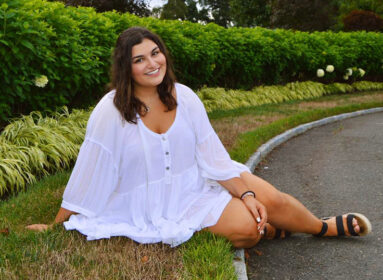The University of Hartford’s Maurice Greenberg Center for Judaic Studies will host a sneak preview of the film “Deadly Deception at Sobibor” on Monday evening, Oct. 14 – the 70th anniversary of the successful revolt and mass escape from the Nazi death camp, Sobibor. The first cut of this new documentary follows the dramatic attempt to locate and excavate the remains of this secret Nazi extermination camp in Poland, that was destroyed and concealed by the Germans after 300 prisoners staged their daring escape.
In the documentary, filmmaker Gary Hochman details how science meets history in a tale of detection led by the Moroccan-Israeli archaeologist Yoram Haimi and his colleague, Polish archeologist Wojtek Mazurek, who teamed up to lead a series of excavations with local Polish workers. It is an unprecedented collaboration in Holocaust research, in cooperation with the State Museum at Majdanek, the Foundation for German-Polish Cooperation, and the Sobibor Steering Committee representing Poland, Israel, the Netherlands, and Slovakia.
Haimi and Mazurek were aided in their work by a geophysical survey conducted with high tech electronics to map the area by historians Richard Freund and Avi Patt from the University of Hartford’s Greenberg Center, geoscientists Paul Bauman and Brad Hansen from Worley Parsons in Canada, and geographer Phil Reeder from Duquesne University. Their unique sub-surface mapping detected the first hidden clues – electronic signatures of manmade “objects” and trenches – indicating prime areas to begin excavating in the dense woods.

The most extraordinary discovery reveals the first positive identity of a Sobibor victim – a six-year old girl from Amsterdam named Lea Judith de la Penha.
The documentary, which is still a work in progress, traces the excavations as they happen – as clues to key features of the death camp are revealed: the gas chamber, a walled corridor snaking through the camp called the Himmelfahrstrasse (Road to Heaven), and barracks. As the team’s archaeological digs progress, we see hundreds of artifacts reveal a dramatic and tragic story through personal belongings – a Star of David, a pendant inscribed with Shema Yisrael, glasses, coins from across Europe, shoes, and children’s items. The most extraordinary discovery reveals the first positive identity of a Sobibor victim – a six-year-old girl from Amsterdam named Lea Judith de la Penha.
The film is a production of Changing Minds Productions, produced, directed and taped by Hochman, a native of Springfield, Mass., who was raised in Longmeadow, where his family were members of Sinai Temple.
The Ledger spoke with Hochman from his home in Nebraska about the excavation at Sobibor and the making of his new film.
JEWISH LEDGER (JL): Can you tell us why Sobibor became the target of an archaeological dig?

Israeli archaeologist Yoram Haimi (standing, center, wearing sunglasses) and his colleague, Polish archaeologist Wojtek Mazurek (standing to Haimi’s left, wearing cap) with Polish locals working on the Sobibor excavation project.
GARY HOCHMAN (GH): The whole reason the excavation even took place is because Yoram Haimi, who is an archaeologist for the Israel Antiquities Authority, lost three relatives at Sobibor; and Yoram went to Yad Vashem to do research to find out what had happened to his uncles, who were photographers living in Paris in 1942 when they were picked up along with many other people and put on trains and sent to Eastern Poland. Whatever they were told will never be known, but they ended up at Sobibor and that meant that they would be killed, because it was strictly a death camp, save for a few hundred slave laborers who were selected from time to time to help keep the place running. It was guarded; surrounded by a minefield — there was not supposed to ever be an escape. And that’s exactly what happened.
When he went to Yad Vashem and found out that his relatives were sent to Sobibor he went there to pay his respects. And when he got to the site, he saw a forest. That’s what is there today – a really mature forest. One of the reasons for that is that Sobibor is set up along a rail line in a highly dense forest area. When trains pulled into Sobibor during the war it was a small hamlet surrounded by forest. It was a secret place; a place where the Nazis could do their terrible deeds and operate a death factory.
When Yoram first arrived at the site he saw this forest and asked the forestry people how old the trees were, and they told him they were 60 to 70 years old. Well, Yoram is an archaeologist; when you’re presented with facts like that your mind immediately realizes that noboby probably touched this area.
JL: Why was Sobibor in such a remote spot – and why was it buried?
GH: There were three top secret death camps that were part of the Final Solution: Treblinka, Belzec and Sobibor. They were established around the same year and they operated in more rural locations, far away from the prying eye of the public, for the most part. At Sobibor about 250,000 people were killed between 1942 and 1943 — about an 18-month period. The killings came to an abrupt halt on Oct. 14, 1943 when the prisoners launched a daring revolt. They lured 11 guards into barracks and slew them. About 300 people fled in the mass escape. About 52 survived. Eight are living today. Soon after the revolt the Nazis closed the camp and destroyed it to remove evidence of their crimes. After the war the Poles planted trees on the site again. They returned it to a forest. So what you have today is a big forest with an open field and a circular ash mound monument in the big field. The big field is where the mass graves were. The camp had been destroyed within a month or so after the revolt. In fact, there are Luftwaffe photos that show how the site looked before the war, when it was a farm, and after the war when there’s a big empty space in the forest.
JL: What makes this excavation project especially challenging?
GH: If you’re looking at woods, the real challenge is where are you going to dig? You’re looking for a camp that no longer exists. It’s not like going to Auschwitz or Majdanek, where the buildings still stand and you know the layout of the place; you know where there are barracks, gas chambers, gates… You know everything about it, in terms of the structures and the layout. At Sobibor the Nazis tried to erase the camp from history — and they did a really good job of it right up until Yoram looked at the place and said ‘we can excavate here because, if nobody’s touched this site since the war, then, like any crime scene, something should be left behind.’
That’s what’s really interesting about this in terms of Holocaust research. So much of Holocaust research depends almost entirely on official records that exist from the Nazis, or eyewitness testimony. You’re depending on records and memory. At Sobibor, you’re using the excavation – you’re using science – to make new discoveries and to confirm eyewitness testimony or link obscure records. There are obscure records that exist, but nothing that you could piece together to make a story if you looked at the records alone. [The Nazis] really did keep the camp a secret from the time that it was created to the time that they destroyed it.
GH: How did the geophysical survey come into play?

Filmaker Gary Hochman videotapes as Yoram Haimi (purple shirt) and Canadian geoscientist Paul Bauman prepare to send up a camera to take an aerial photograph of the site.
The survey that Hartford was involved in helped them locate certain points beneath the surface that would be very helpful in starting an excavation.
In 2008, Richard [Freund] met Yoram on a trip to Israel, and Yoram was telling Richard about the excavation he was doing. Richard had worked with a geophysical team for 10 years on various archaeological sites and they teamed up for a short period of time to do this geophysical survey.
The value of the survey is they located two really important things. In the open field, without doing any digging, they could see where trenches were located, and the trenches would be the mass graves. In the woods, the electronic survey equipment helped them locate four man-made objects, which they called pillars or posts. It’s a very distinct visual in the readout. You see four colorful blobs separated by about three meters. When they saw this they realized that it’s not natural to have four objects in a straight line in the middle of a forest where trees are kind of willy-nilly. The electronics read reflections of anything that would have contained some kind of metal or some area that’s man-made, like a trench or foundation.
So the following year the excavation started. The University of Hartford was involved for one season for about two weeks, and the sole purpose was to use electronics to help the archaeological team decide where is the best place to start doing work. They set up an elaborate grid-work of squares, and they ran their equipment back and forth for each grid in the woods and then in the open fields, where they thought there was the possibility of finding the gas chamber. Otherwise the team would have just had to start digging.
JL: How – and why – did you become involved?
GH:: I’ve worked with Richard off and on for more than a decade on various projects and, in 2008, he asked me if I would be interested in documenting the work they were doing at Sobibor. I was coming home to Springfield for a visit and I had landed in Hartford and I didn’t have time to go to the university to meet with Richard, so he came to meet me and told me about this. He asked me if I knew anything about Sobibor. And I told him I had heard of it. And he said ‘we’re getting involved in an excavation; we’re going to do a survey, would you be interested in documenting it. He talked about Yoram and Yoram’s personal connectionto Sobibor.

Philip Bialowitz, one of only eight survivors of the Sobibor revolt, returned to the site of the death camp to testify about his experiences as a teenage victim of the Nazi brutality. On the anniversary of the revolt, Bialowitz had a stunning encounter with an unexpected guest – the son of a Sobibor guard.
He didn’t need to tell me much more. The work that they’re doing is fantastic. When you can use science to investigate history and it has to do with your own culture, it’s a pretty natural mix. It’s a fascinating story about a secret death camp that the Nazis destroy. You’re talking about Jewish history, the history of World War II, Polish history… All those things are coming into play in this story. This really is one of the most amazing collaborations that I’ve ever been part of because you have all of these cultures involved – in the background you have foreign nations: Poland, Israel, the Netherlands and Slovakia. These nations have all lost people at Sobibor. They all have a stake in it.
When you have an Israeli and a Pole getting together with local Polish workers to work on the excavation you have an amazing opportunity to delve into history and have a cross-cultural collaboration. It really just doesn’t happen very often anywhere; in particular in the study of the Holocaust.
JL: The film is billed as a “first cut” – why is that?
GH:: I had only a couple of months to edit five years’ worth of works. The 70th anniversary of the Sobibor revolt is Oct. 14 and there was a tremendous amount of interest in having something prepared. So, I said that since there was not enough time to edit the film the way I would edit the film, I offered to put together a “sneak peak” of a documentary. It’s a work in progress. It’s not a final film. But it will give an idea of the story that was involved. The sneak peak will give you a good feel for what happened over a five-year period in detecting what they know until today. But it’s an unfinished story on the screen. It doesn’t have a professional narrator – it has my voice – it doesn’t have lots of music, animation, color-correction, an audio-mix… It will play like a film but, from my perspective, it’s not ready for prime time.
JL: How is the film being funded?
GH: I have funding from a variety of sources: I have a grant from the Claims Conference, the Smart Family Foundation (Connecticut), the JB and MK Pritzker Family Foundation (Chicago), Targum Shlishi Foundation, the Bill Foggle Foundation (Massachusetts) and Mike Eppel.
To continue, however, we still need to raise about $150,000 – that will go towards both the continuation of the excavations and the completion of the documentary.
“Deadly Deception at Sobibor will screened on Monday, Oct. 14, at 7 p.m. in the Wilde Auditorium, on the lower level of the Harry Jack Gray Center, at the University of Hartford, 200 Bloomfield Ave. in West Hartford. Attendance is free and open to the public but seating is limited. To reserve tickets call (860) 768-4228.
Yoram Haimi will discuss archaeology and the Holocaust at a special Kristallnacht program entitled “70 Years After the Sobibor Revolt” on Saturday, Nov. 9, 7 p.m., in the Wilde Auditorium, Harry Jack Gray Center, University of Hartford. For tickets call (860) 768-4228.
For more information on the film, contact Gary Hochman at ghochman1@unl.edu or (402) 417-5751.
Comments? Email judiej@jewishledger.com.








 Southern New England Jewish Ledger
Southern New England Jewish Ledger










